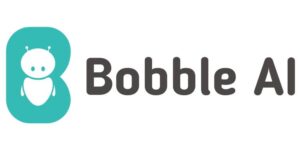Elon Musk’s X Files Lawsuit Against India for Alleged Misuse of IT Laws to Censor Online Content Following Review of Grok AI’s Offensive Hindi

Elon Musk’s X Takes Legal Action Against India Over Content Censorship
Background of the Situation
X, the social media platform formerly known as Twitter, has initiated legal proceedings against the Indian government. The move comes after the Centre sought to implement regulations aimed at curbing abusive content generated by Grok AI, a system designed to interact in Hindi. The social media giant claims that these actions violate digital rights and privacy, accusing the Indian authorities of misusing the Information Technology (IT) laws to suppress online expression.
The Implications of IT Laws
India’s Information Technology Act provides a framework for addressing various issues related to digital content, including the removal of harmful or abusive posts. Although these laws are intended to protect users and promote safe online interactions, critics argue that they can also be leveraged to limit free speech. X’s lawsuit highlights concerns over how these laws may be applied to sweep away legitimate content in the name of regulation.
Context on Grok AI’s Content
Grok AI is developed to generate and engage in conversation using Hindi, aiming to make technology more accessible to Hindi-speaking users. However, the platform faced scrutiny after some generated content was deemed offensive. In response, the Indian government took steps to ensure that the AI’s outputs align with acceptable standards of language use and cultural sensitivity. The government’s request for compliance sparked a larger discussion about the role of social media in regulating speech and content online.
Legal Concerns Raised by X
X has voiced serious legal concerns regarding the government’s actions. In its lawsuit, the platform argues that:
- Violation of Free Speech: X contends that the government’s measures infringe upon users’ rights to express themselves freely.
- Unclear Regulations: The social media platform points out that the existing IT laws may not clearly delineate what constitutes abusive or harmful content, leading to excessive censorship.
- Increased Liability: X fears that imposing stringent regulations could lead to the platform being held accountable for content that may not necessarily be abusive or harmful.
Reactions from Different Sectors
Government’s Standpoint
The Indian government maintains that enforcing these regulations is crucial for maintaining social harmony and preventing the spread of misinformation. Officials argue that measures to control harmful content are essential in a diverse and multilingual society like India.
Global Perspective
On a global scale, the issue of regulating online content has gained significant traction. Different nations vary widely in their approaches—some endorse strict regulations while others advocate for extensive free speech protections. This legal tussle signifies a growing tension between tech companies and governments regarding the boundaries of free expression on digital platforms.
Public Response
The public reaction to this case has been mixed. While some users support moves to regulate abusive content, others express concern over potential overreach. Online communities are increasingly engagement on the balance between safety and freedom of speech, reflecting the wider societal debate on these issues.
Conclusion
The legal battle between X and the Indian government raises important questions about online speech regulation, freedom of expression, and the responsibilities of tech companies. As both parties prepare for legal proceedings, the outcome will have lasting implications for the future of digital content moderation in India and beyond.






